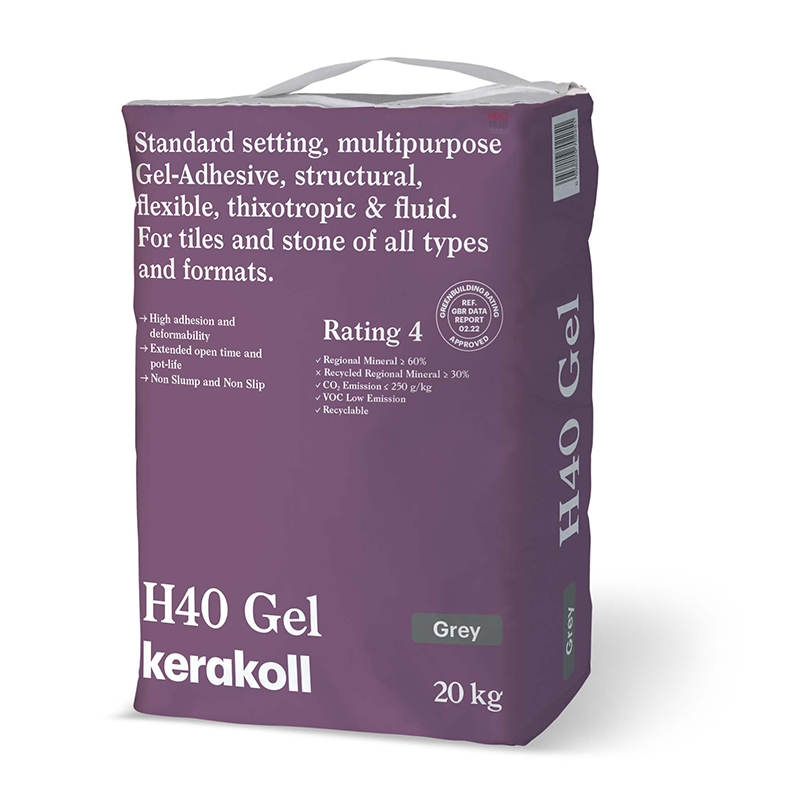The Best Adhesives For Tiling Over Tiles
05/01/2023A question tilers are frequently asked by their customers is whether it is possible to tile over existing tiles. The answer, in short, is yes, but this depends on a variety of factors. It is always preferable to remove the existing tiles first to create a stable and ideal substrate. Being able to tile over tiles will depend on the condition of the existing tiles, the quality of the previous job and the size of the new tiles to be laid. This will have an impact on whether the floor needs relevelling and the choice of adhesive, as only certain adhesives are suitable for tile-on-tile application.
Can you tile over existing tiles?
If you have opted to tile over your existing tiles, you need to ensure your existing tiles are sound, stable, dry, securely bonded and fixed to a background that is capable of taking the additional weight.
Your existing tiles can not be loose, must be free from grease and not be cracked, otherwise you may experience issues. You must ensure the tiles are completely de-greased to remove anything that could reduce the effectiveness of any new adhesive added, which can be an arduous task if operating in kitchens or large commercial areas
Products you need to tile over tile
Primer:
Once the existing tiles have been cleaned, the existing tiles next need to be primed to ensure the smooth, seamless fitting of the new tiles. Priming the existing tile will help to reduce the porosity (absorbancy) of the background which in turn will minimise any chemical reactions with adhesives. Selecting the right primer is essential for tiling over your existing tiles to make sure your new surface has enough grip for the new layer of adhesive you are about to apply.
If your tiles are impermeable old vinyl, linoleum or ceramic, Palace Grit-Prime Bond Enhancing Primer would be the most suitable. This primer promotes a locked-in bond to the substrate providing a good base for your new tile. A benefit of this primer is that it is quick drying and ready to use meaning it eliminates waiting around and you can begin your tiling. This primer is for use with cement-based adhesive and floor screeds.
Another ready-to-use primer is the Tilemaster Prime + Grip Multi-Purpose Bond Enhancing Primer which provides an excellent key and grip surface making this an ideal primer to use for tiling onto existing tiles. This primer consolidates substrates prior to installation. Due to its rapid drying properties, it can be tiled after as little as 15 minutes. This primer is primarily intended for use on non-porous substrates but can also be used on porous substrates if required.
If you have a non-absorbent surface such as ceramic, terrazzo or natural stone the best primer to use would be Mapei Eco Prim Grip Plus. This is a bonding promoter and primer.
A moisture-tolerant primer suitable for porous and non-porous substrates is Ultra Floor PRIME IT MULTI-SURFACE PRIMER. This primer is recommended for use prior to the application of smoothing underlayments and between layers, making it a suitable primer to be used for tiling onto existing tiles as it maximises interlayer adhesion.
Adhesives:
Choosing the right adhesive to tile onto existing tiles is crucial as only certain tile adhesives are suitable for tile-on-tile application. Pro Tiler Tools have a variety of different adhesive options for your next tile-on-tile job!
It is recommended to use an S1 rated adhesive for tiling onto existing tiles. A standard adhesive will give the user good workability time with the adhesive meaning you shouldn't have to come back the following day while waiting for the adhesive to set.
A suitable adhesive for tiling over tiles would be the Ultra Tile ProFlex SPES Standard Set Flexible S1 Adhesive which is available in white and grey. This adhesive has extended open time and is specially formulated with extended workability, which enhances both adhesion and flexibility.
The Kerakoll H40 Gel Adhesive Standard Set S1 available in white and grey combines unique workability and high performance. This adhesive is easy to apply and holds its shape supporting the weight of heavy tiles, making it a suitable choice when tiling on existing tiles. The H40 Gel has great performance with all materials and substrates making it a go-to adhesive for all situations.
Another S1 adhesive suitable for tiling on your existing tiles is the Benfer BenferFlex +S1 High Yield Standard Set Flexible Adhesive 25kg Extra White. This adhesive has been formulated and developed for a rapid, reliable installation of ceramic, porcelain and natural stone tiles, even on non-absorbent substrates and onto substrates subject to slight dimensional value.
Tips to remember:
- Examine the existing tiles to ensure they are suitable to tile on top of
- Your existing tiles can not be loose, not greasy and not cracked
- Do not over-tile onto softer vinyl, quartz or composite tiles
- Ensure the tiles are de-greased
- Tiles must be primed before fixing
- Use an S1 adhesive
With a wide range of tiling tools and materials available at Pro Tiler Tools, we have everything you need to help with your next tiling over tile job.
Are you ready to complete your job? Shop now at https://www.protilertools.co.uk/!



